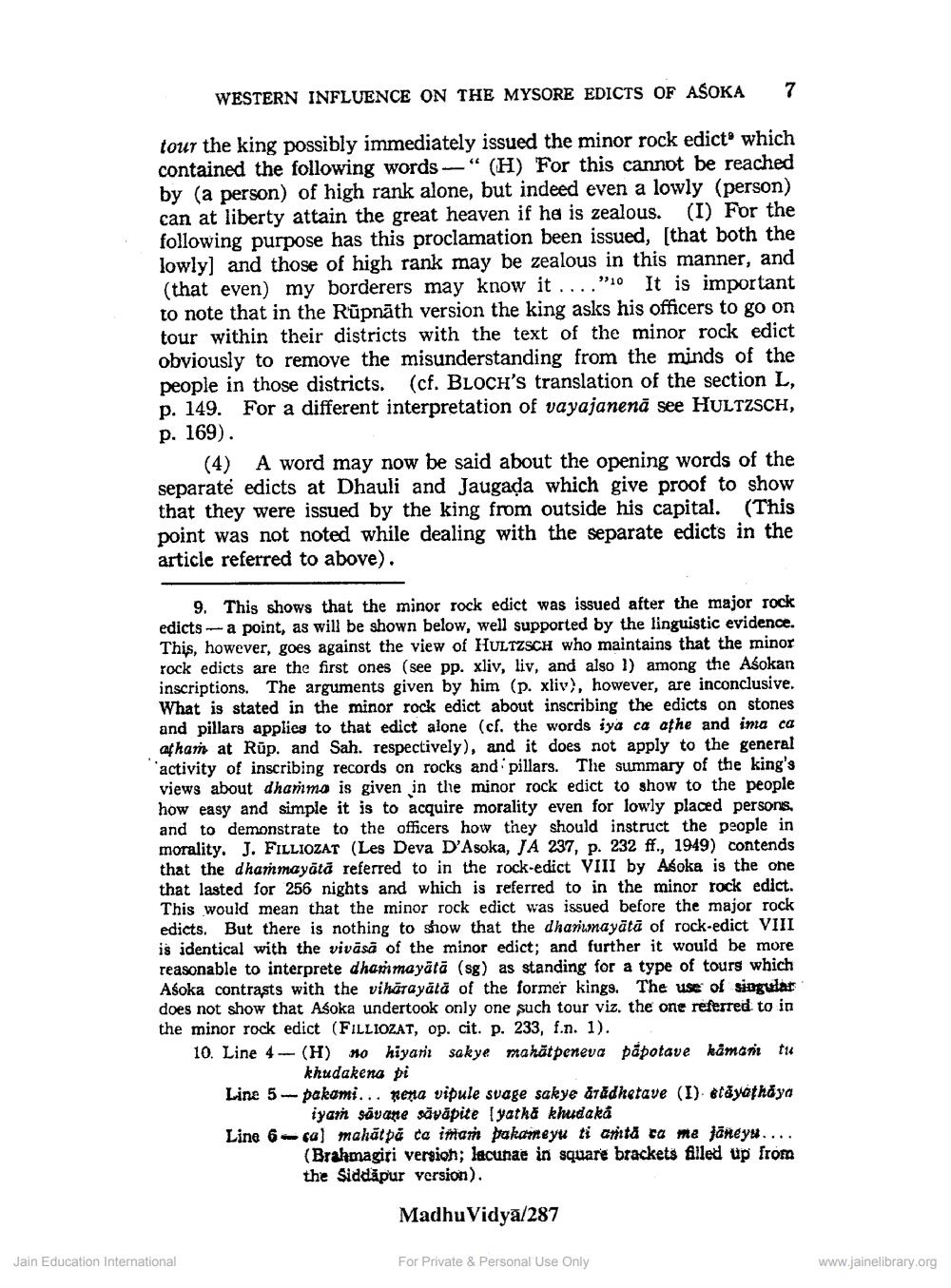________________
WESTERN INFLUENCE ON THE MYSORE EDICTS OF ASOKA
7
tour the king possibly immediately issued the minor rock edict which contained the following words -" (H) For this cannot be reached by (a person) of high rank alone, but indeed even a lowly (person) can at liberty attain the great heaven if he is zealous. (I) For the following purpose has this proclamation been issued, [that both the lowly) and those of high rank may be zealous in this manner, and (that even) my borderers may know it....”: It is important to note that in the Rūpnāth version the king asks his officers to go on tour within their districts with the text of the minor rock edict obviously to remove the misunderstanding from the minds of the people in those districts. (cf. BLOCH's translation of the section L, p. 149. For a different interpretation of vayajanenā see HULTZSCH, p. 169).
(4) A word may now be said about the opening words of the separate edicts at Dhauli and Jaugada which give proof to show that they were issued by the king from outside his capital. (This point was not noted while dealing with the separate edicts in the article referred to above).
9. This shows that the minor rock edict was issued after the major rock edicts a point, as will be shown below, well supported by the linguistic evidence. This, however, goes against the view of HULTZSCH who maintains that the minor rock edicts are the first ones (see pp. xliv, liv, and also l) among the Aśokan inscriptions. The arguments given by him (p. xliv), however, are inconclusive. What is stated in the minor rock edict about inscribing the edicts on stones and pillars applies to that edict alone (cf. the words iya ca athe and ina ca afhan at Rūp. and Sah. respectively), and it does not apply to the general 'activity of inscribing records on rocks and pillars. The summary of the king's views about dharma is given in the minor rock edict to show to the people how easy and simple it is to acquire morality even for lowly placed persons. and to demonstrate to the officers how they should instruct the people in morality. J. FILLIOZAT (Les Deva D'Asoka, JA 237, p. 232 ff., 1949) contends that the dhammayātā referred to in the rock-edict VIII by Asoka is the one that lasted for 256 nights and which is referred to in the minor rock edict. This would mean that the minor rock edict was issued before the major rock edicts. But there is nothing to show that the dharunayātā of rock-edict VIII is identical with the vivāsā of the minor edict; and further it would be more reasonable to interprete dharmayātā (sg) as standing for a type of tours which Asoka contrasts with the vihārayātā of the former kings. The use of singular does not show that Asoka undertook only one such tour viz. the one referred to in the minor rock edict (FILLIOZAT, op. cit. p. 233, f.n. 1). 10. Line 4 (H) no hiyari sakye mahātpeneva päpotave kämant tu
khudakena pi Line 5 - pakomi... Rena vipule svage sakye aradhetave (I) etayathaya
iyan savane săväpite yatha khudaka Line 6 cal mahātpă ca iman pakaneyu ti anta ca me janeyu....
(Brahmagiri version; lacunae in square brackets filled up from the Siddăpur version).
Madhu Vidyā/287
Jain Education International
For Private & Personal Use Only
www.jainelibrary.org




